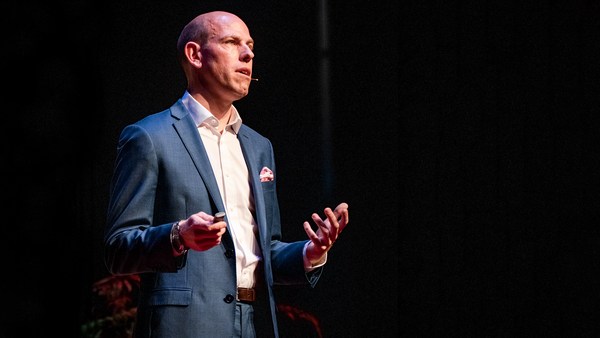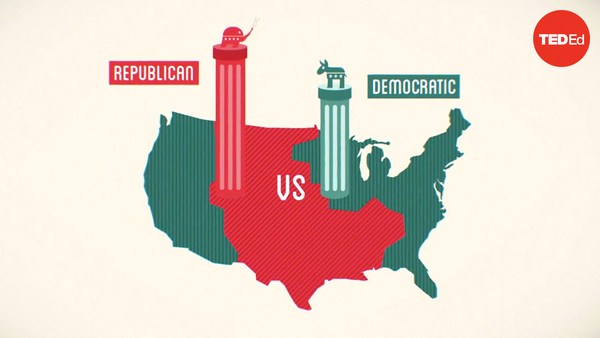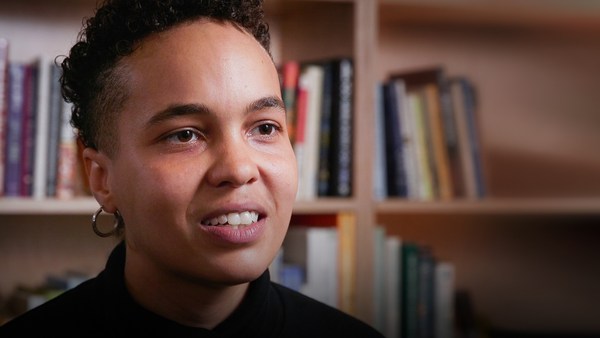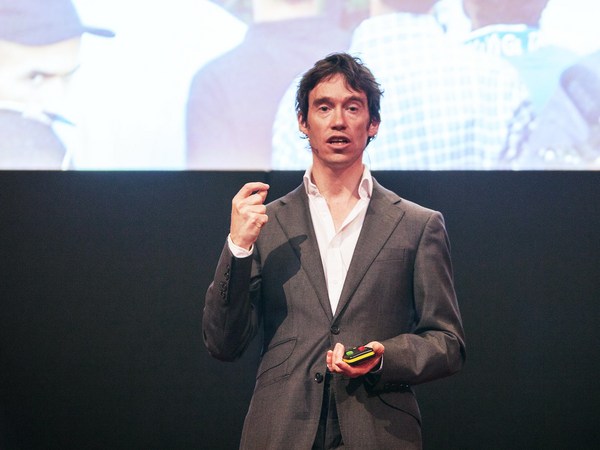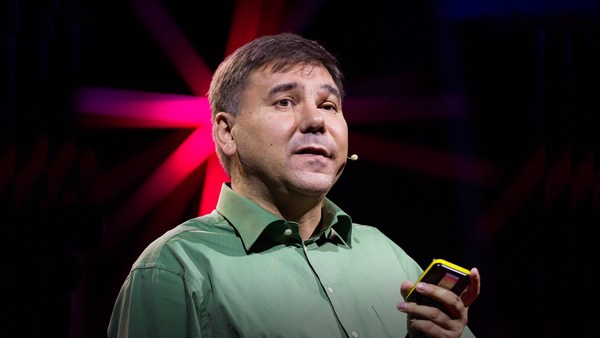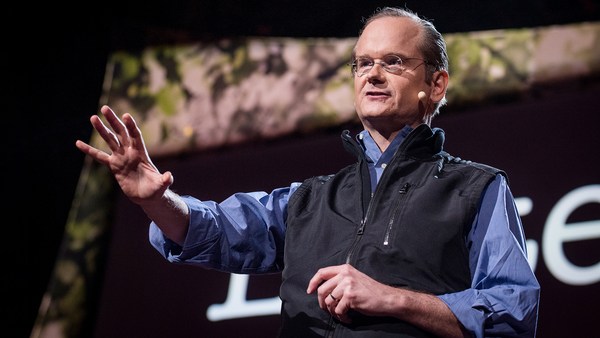Voting can be hard. It's been hard, sometimes painful, sometimes impossible, since the very beginning of our democracy. This year and years prior, we've seen voters wait in line for five, six and seven hours. And the issue hasn't been fixed. Now, some people may see these images and think, "How patriotic. How impressive that someone would wait in line for seven hours just to vote." But to me, it's not impressive at all. It's disrespectful to these voters. Making voting difficult goes against the very core of our democracy. If we could redesign the system to make it more convenient, more accessible and easier for voters, why wouldn't we?
Now, the short answer is: political will. Many established politicians would not actually benefit personally from a reformed voting process that's inclusive for all voters. Politicians are the players in the game, but yet they set the rules for the game. Election policy must be about who votes, not who wins.
And the more complicated answer is that our voting system and election system in the United States is highly decentralized and inconsistent. Over 10,000 different local election officials administer this process in cities and towns and counties across the country. They might vary in size from 400 voters to 4.7 million. There's also 50 different state legislative bodies that set the rules of the game, and over 50 different chief election officials and entities that oversee those rules and how they're administered. So voting may vary greatly from state to state. Best-case scenario, you're in a state like Colorado, and a ballot is mailed to you proactively before each and every election. No bureaucracy, no extra paperwork. The ballot comes, and the government is responsible for delivering democracy to you. Worst-case scenario, you're in a state like Missouri, where your options are limited, you have overly restrictive voter registration deadlines. And if you can't get off work or you don't have childcare or you're sick, that's too bad. And most American voters don't fall into the best-case scenario.
Now, in my career as an elections official for many years, and now leading the National Vote at Home Institute and our work to improve the voting process across the United States, I've talked to thousands of voters about their voting experience and thousands of election officials about the process. I also coauthored a book called "When Women Vote," that outlines a road map and a playbook for how to improve the process for all. And so I ask you: What would you choose? Which scenario would you choose?
Now, the 2016 election was the most highly watched, most anticipated election in US history. And yet, only 60 percent of eligible Americans actually voted. Over 100 million people did not vote in 2016. And when they were surveyed as to why, over 40 percent indicated it was due to a barrier: missing a deadline, couldn't get off work, couldn't wait in line for hours. If "did not vote" was on the ballot in 2016, "did not vote" would have won in a landslide. What we end up with is a system where a minority of eligible Americans are choosing the politicians that make decisions for all of us collectively. Trust in the US government and politicians is at an all-time low, and the ballot box isn't helping. If we can't even cast a vote easily, why would we ever trust the process or trust politicians? We must put voters first. I'll say that again. We must put voters first in election policies and designing a system that serves them.
Just ask any successful business. We live in an era of same-day shipping, free delivery, Lyft and Uber and take-home cocktails. And consumers, especially in the height of the pandemic, are choosing their experiences in the comfort of their home and on their schedules. So why can't we design a voting process that is as convenient as that?
Luckily, we don't have to speculate. In Colorado, we've already designed that process, and Colorado is now one of the best states to vote in and also one of the most secure. In 2013, I worked with a group of dedicated leaders to redesign our voting process and pass legislation that put voters first. In Colorado, every voter receives a ballot ahead of each election. They're automatically registered to vote. There's no overly restrictive deadlines. And with BallotTRACE, voters can track their ballot just like they would a package, through the process, from the moment it's mailed to the moment the election official receives it for counting.
That system was pioneered in Denver now 11 years ago. And when we designed it, we were able to reduce our call volume by 70 percent and infuse transparency and accountability into the process. Now, when you get that ballot at home, you can vote it and then mail it back in or drop it off in person. And if you want to vote in person, you can do that, too. And you're not confined to the government-assigned polling places on one day. You can go to any vote center -- close to your kids' school, close to work, close to home -- and you can do so over a few weeks prior to the election. It's been seven years since we passed that legislation and implemented that model. And the results are incredible.
Colorado increased turnout significantly and now is one of the top states for voter turnout and also one of the most secure. We also saw a reduction in costs. So, because more people were voting at home, we didn't need as many poll workers, and we saw that reduce by over 70 percent. When we went to buy a new voting system, we no longer needed as much equipment. We also saw voters go farther down the ballot, to local races and ballot issues. And we saw turnout increase on those down-ballot races and issues. Those races include mayor and school board and city council. And they also include the really long legalese ballot issues that take forever to figure out. Voters now have a laptop in reach at their home, and they can research candidates and issues on their own time. We also have research now that shows that voting by mail and voting at home makes voters more informed because they have all of that extra time, as opposed to being in person and worrying about the long line of voters behind you while you're trying to rush through.
And the final, most important aspect of the results that we've seen out of Colorado is about civics for future voters. And I want to share my story with my two elementary children. Every time my ballot comes before each election, one of my kids gets it, and they always start asking, "When are we going to fill out mom's ballot?" We sit down together, they read the instructions to me, they read the candidate names, and they ask me questions like, "Mom, what does governor do? What does the mayor do? Maybe I want to be a mayor someday." We research those issues together, we talk about it, and it takes me forever to complete my ballot. But I know that I have created lifelong, civically engaged voters and future voters that understand that the choices they make on that ballot impact their communities and their world. This is the type of voting experience that we want for every voter across the country.
Many other states have taken notice, including California, Vermont, New Jersey, Hawaii. All have expanded options for voting at home this year, in 2020. Americans are resilient. We need a voting process that is also resilient -- from a pandemic, from burdens and barriers, from inequities, from unfairness, from foreign adversaries and from administrative deficiencies. Across the country, voters are choosing to vote at home in record numbers. It is safe, it is secure, and we have built-in security measures to deter and detect bad actors who try to interfere with the process. Today, voting at home means paper ballots, but in the future, that might look very different.
Voters deserve an awesome and safe voting experience, free from barriers and burdens. It's the politicians that serve us, not the other way around. You deserve excellence. Expect it, demand it and advocate for it.
Thank you.
